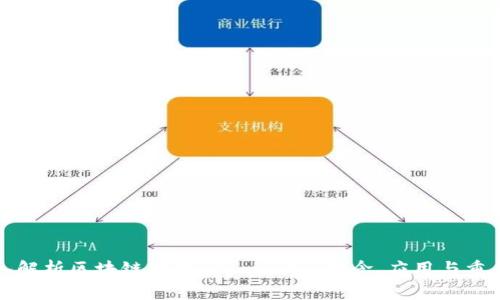区块链技术作为一种新兴的分布式账本技术,正在逐步改变我们对数据存储、交易确认及信任机制的传统理解。在区块链的高速发展过程中,各种术语和概念相继出现,其中“Commit”作为一个重要概念,尤其在数据一致性和交易确认的背景下,具有重要的理论和实际意义。本文旨在详细介绍区块链中的“Commit”,并探讨它在实现数据一致性和交易确认中的作用。
什么是Commit
在区块链的上下文中,“Commit”可以被理解为一个操作或者过程,涉及将某个交易或状态的改变正式记录到区块链上。在进行“Commit”之前,交易通常处于一个候选状态,这意味着它们尚未被确认为最终结果。
具体来说,当一个用户发起一笔交易时,该交易会首先被广播到网络中,随后网络节点会对其进行验证。一旦交易通过验证,节点会将该交易纳入一个候选区块中。直到所有的验证过程完成,节点达成共识时,交易才会被“Commit”,即被正式记录到区块链上。
在这个过程中,Commit不仅仅是一个简单的操作,它涉及多个技术细节,包括共识算法的选择、区块的打包与创建、以及怎样确保数据的一致性和安全性等。
Commit的应用

Commit的应用往往与数据一致性和交易确认紧密相关。在很多区块链系统中,数据的一致性是一个至关重要的特性,尤其是在金融交易和重要合约中。
首先,让我们探讨数据一致性的意义。在区块链中,数据一致性确保了网络中所有的参与者都能够看到相同的交易状态。如果一个交易无法被所有节点同时看到,可能会导致资金的双重使用或其他的安全问题。
为了实现这一点,区块链通常采用不同的共识机制,例如工作量证明(Proof of Work)和权益证明(Proof of Stake)。在这些机制中,Commit过程是共识算法的重要组成部分。通过要求节点之间达成一致,区块链能够确保所有的用户都能在同一时间内看到相同的交易状态。
其次,Commit还有助于实现交易的最终确认。在传统的金融系统中,交易确认可能需要数天,而在区块链中,使用Commit过程,交易通常可以在几分钟内完成确认。这个过程通过多个节点确认交易并形成区块来提高安全性和效率。
Commit的重要性
在区块链技术中,Commit的过程并不仅仅是一个执行步骤,它的逻辑关系和作用深远,影响着整个系统的安全性、效率及用户信任。
首先,Commit是区块链系统避免数据篡改的重要机制。通过将交易记录以加密的方式永久保存至区块链中,并通过去中心化的方式记录在多台计算机上,区块链能够提供非对称加密的保障,从而确保一旦数据被Commit,就不可能被轻易地更改。
其次,Commit提高了系统的运行效率。通过减少中介环节,区块链能够有效降低交易成本和时间。通常,过去进行一笔交易需要依赖银行等金融机构的处理,而现今通过区块链进行的交易,可以在帖文被网络节点确认后迅速进行Commit。
最后,Commit提高了用户的信任感。在透明且公开的区块链网络中,作为交易参与者的用户能够随时查询和验证他们的交易状态,充分保证交易的合法性和真实性。这样的透明性极大增强了用户对区块链系统的信任,使得越来越多的人愿意参与这一新兴技术。
相关问题探讨

在深入了解区块链中的Commit概念后,可能会引发一些相关问题。以下是三个常见的相关问题及其详细解析。
1. Commit的过程是如何保障交易安全的?
The security of transactions in blockchain systems relies heavily on the commit process. The process begins with a transaction being created and broadcasted to the network, where it awaits validation by various nodes. Each node examines the transaction to ensure validity through cryptographic algorithms and consensus mechanisms. Once the transaction is validated, it is bundled with other transactions into a block.
During this process, the transaction is still considered to be in a tentative state. Only when a majority of nodes confirm the inclusion of the transaction in a block — and consensus is achieved — can it be considered "committed". This multi-layered validation and confirmation process mitigates the risk of fraud and double-spending, which are significant concerns in any transaction system.
Moreover, the cryptographic hashing used in blockchain technology creates a secure chain of blocks. Each block contains a hash of the previous one, meaning that if someone attempts to manipulate a prior transaction, it would require altering not just that transaction but all subsequent blocks. This extremely high degree of difficulty in altering data presents a formidable barrier against potential attacks, thus fostering a highly secure environment for transactions.
This decentralized nature inherently contributes to safety. No single entity has control over the entire blockchain, making it nearly impossible for any one party to compromise the data. Furthermore, due to the consensus protocol, a fraudulent transaction won't be able to spread throughout the entire network, as honest nodes will reject such entries during the commit process. Thus, the security of transactions in blockchain is maintained primarily through the robust commit mechanism coupled with advanced cryptographic practices.
2. 不同的共识机制对Commit的影响是什么?
The consensus mechanism plays a crucial role in how the commit process is executed across various blockchain networks. Different blockchain systems utilize different methods to achieve consensus, and these methods dictate how transactions are processed and confirmed.
For instance, in a Proof of Work (PoW) system, like Bitcoin, miners must solve complex mathematical problems to validate and add transactions to the blockchain. In this scenario, the commit process is resource-intensive, as miners require significant computational power to win the right to add a new block. Once a miner successfully adds a block, transactions within that block are considered fully committed. However, this means that the confirmation time can vary, and longer confirmation times can lead to temporary uncertainties for users awaiting transaction validation.
On the other hand, Proof of Stake (PoS) systems, like Ethereum 2.0, require validators to lock up a certain amount of currency to be eligible to validate transactions. This approach often allows for faster transaction commits and lower energy consumption than PoW, as it doesn't require the same level of computational intensity. The trade-off here is the need for trust in validators, as their financial stake incentivizes them to act honestly.
Additionally, there are hybrid mechanisms that combine different methods or employ alternative approaches like Delegated Proof of Stake (DPoS) or Byzantine Fault Tolerance (BFT). Each of these mechanisms will have specific rules and structures guiding the commit process, influencing transaction speed, security, and overall efficiency. Ultimately, the choice of consensus mechanism impacts how reliably and swiftly transactions can be committed to the blockchain.
3. 如何Commit过程以提升区块链的性能?
The quest to enhance the commit process in blockchain technology is central to improving overall performance. As blockchain networks grow, the scalability of transaction processing becomes a key concern. Here are several approaches to optimize the commit process for better performance.
Firstly, implementing sharding can significantly enhance performance. Sharding involves splitting the blockchain into smaller partitions (or shards), each capable of processing its transactions independently. By allowing multiple transactions to be processed simultaneously across different shards, the overall throughput increases, thus optimizing the commit time for each transaction.
Secondly, layer 2 solutions, like the Lightning Network for Bitcoin or state channels for Ethereum, can also help. These solutions operate on top of the main blockchain, allowing for faster and cheaper transactions by keeping the majority of interactions off-chain. Only the final settlement is recorded on the blockchain, thereby speeding up the commit process for routine transactions.
Improving the consensus algorithm itself can also lead to performance boosts. For instance, switching to a PoS model could enhance the speed and energy efficiency of the commit process compared to PoW since validators are selected based on stakes rather than computational challenges.
Lastly, enhancements in the underlying network infrastructure, such as increasing bandwidth or employing advanced networking protocols, can reduce latency and further speed up the commit process. Innovations in cryptographic techniques can also cut down validation time without compromising security, providing a seamless way to enhance performance further.
Overall, while committing transactions securely and efficiently remains a challenge, various strategies exist to optimize this essential aspect of blockchain reliability and performance.
通过深入分析区块链中的Commit的概念、应用及其重要性,以及解答三个相关问题,我们希望为读者提供一个更加全面的视角。Commit在区块链的安全性和效率中起着至关重要的作用,了解这一点将促使用户更好地把握区块链技术的未来发展。